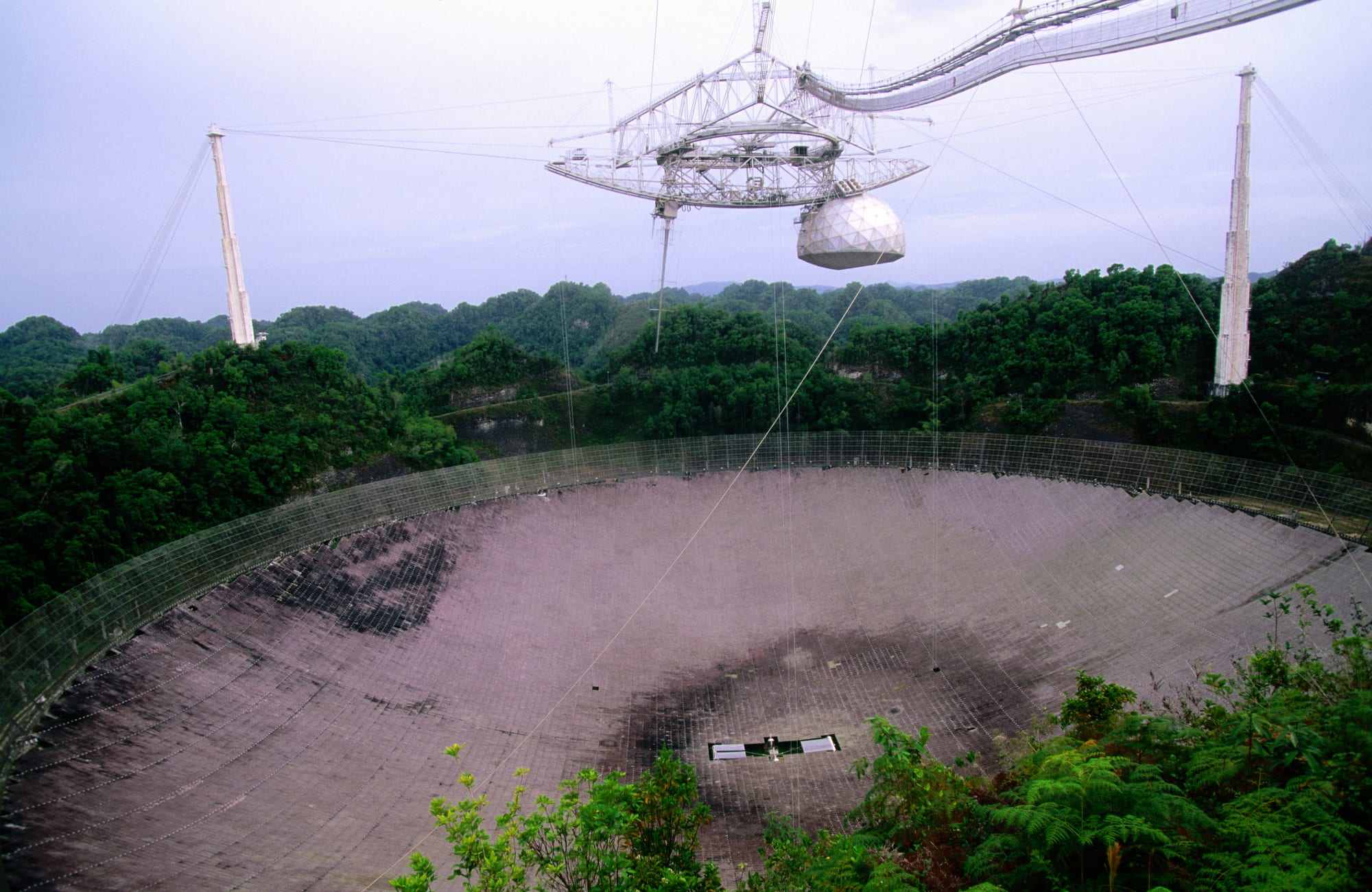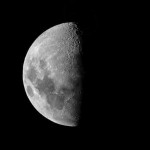Tag Archives: Radio Telescope
Puerto Rico commits $8 million to rebuild Arecibo telescope
Recent damage to the Arecibo telescope could keep it offline for months
Puerto Rico’s Arecibo radio telescope suffers serious damage
China’s giant radio telescope will start searching for aliens in September
Arecibo Observatory nets $19 million grant to search for dangerous asteroids
 NASA has ensured the Arecibo Observatory in Puerto Rico can continue its search for near Earth objects (NEOs) that pose a threat to the planet with a $19 million grant. The fund was awarded to the University of Central Florida, which operates the obs...
NASA has ensured the Arecibo Observatory in Puerto Rico can continue its search for near Earth objects (NEOs) that pose a threat to the planet with a $19 million grant. The fund was awarded to the University of Central Florida, which operates the obs...
Searching for Aliens From the Dark Side of the Moon
Australia Square Kilometre Array Pathfinder goes live as the world’s quickest radio telescope
Australia's Shire of Murchison is quickly becoming a hotbed for radio telescopes. As of of Friday, the territory is operating the world's fastest radio telescope in the form of the Australia Square Kilometre Array Pathfinder (ASKAP). The 36-antenna grid's eventual use of six phased array feeds, each with 188 receivers, will let it scan a field of view 150 times larger than the moon's visible area while processing that information much faster than a typical single-pixel radio telescope feed -- CSIRO estimates that an image of the Centaurus A galaxy that would take 10,000 hours to process with rivals should take five minutes with ASKAP. Ultimately, the array should grow to 60 antennas as part of the Square Kilometer Array, which includes South Africa in its hunt for pulsars, quasars and other unique parts of the universe. Just don't get your hopes up for booking alien listening sessions anytime soon. Commissioning started virtually as soon as the ribbon was cut, and scientists have already scheduled their usage slots for the next five years. We're sure we'll get over any frustration when we see the first ASKAP results published within the next year.
Australia Square Kilometre Array Pathfinder goes live as the world's quickest radio telescope originally appeared on Engadget on Fri, 05 Oct 2012 11:52:00 EDT. Please see our terms for use of feeds.
Permalink Reuters |
Reuters |  CSIRO | Email this | Comments
CSIRO | Email this | Comments Radio astronomy pioneer Sir Bernard Lovell dies at 98
Astronomy just lost one of its vanguards, as Sir Bernard Lovell has died at 98. The UK-born scientist was best known as a cornerstone of radio telescope development. While he wasn't the first to leap into the field, he established the University of Manchester's Jodrell Bank Observatory to study cosmic rays in 1945 and organized the construction of what would ultimately be called the Lovell Telescope -- a radio telescope so large and useful that it's still the third-largest steerable example in the world, 55 years after it was first put into action. His work helped track some of the earliest spacecraft and was instrumental in confirming the first discovered pulsars and quasars. On top of his most conspicuous achievements, Sir Lovell played an important role in developing airborne radar during World War II and was lauded for having scientific curiosity long after he hung up his Jodrell director's hat in 1980. Science will be poorer without him.
[Image credit: NASA; thanks, Darren]
Filed under: Science
Radio astronomy pioneer Sir Bernard Lovell dies at 98 originally appeared on Engadget on Tue, 07 Aug 2012 14:43:00 EDT. Please see our terms for use of feeds.
Permalink | BBC | Email this | Comments
BBC | Email this | Comments IBM cluster powers Murchison Widefield Array’s radio telescope, answers mysteries of the universe faster than ever (video)
Radio telescope operators have as much of a problem coping with the avalanche of data as getting that information in the first place. The Victoria University of Wellington is all too aware and is leaning on IBM for a powerful (if very tongue-tying) iDataPlex dx360 M3 compute cluster to sift through the deluge at the upcoming Murchison Widefield Array. Combined, the 4,096 array antennas probing deep space and solar atmospherics will have the Xeon-based cluster tackling signal data to the tune of 8GB per second, and about 50TB per day -- that's a Nexus 7's worth of astronomy faster than you can sneeze, folks. A 10Gbps network connection will feed the results to Perth to save scientists a roughly 435-mile trek. Construction is still in mid-stride, but the $51 million Australian ($52.2 million US) being spent on the Murchison array may be worthwhile if it helps solve the riddles of star formation and solar flares.
Filed under: Science
IBM cluster powers Murchison Widefield Array's radio telescope, answers mysteries of the universe faster than ever (video) originally appeared on Engadget on Tue, 24 Jul 2012 20:54:00 EDT. Please see our terms for use of feeds.
Permalink Ubergizmo |
Ubergizmo |  Murchison Widefield Array (Facebook) | Email this | Comments
Murchison Widefield Array (Facebook) | Email this | Comments  Humanity is never going to give up on the idea of finding another lifeform somewhere in this universe, so why …
Humanity is never going to give up on the idea of finding another lifeform somewhere in this universe, so why …

